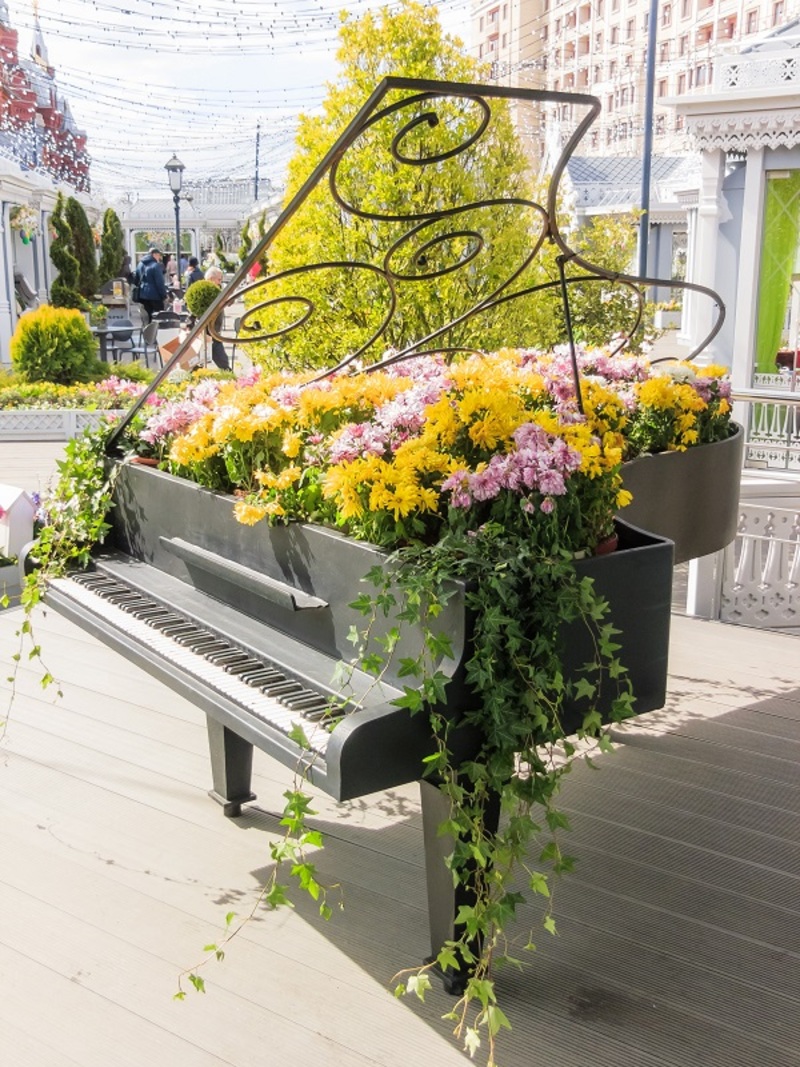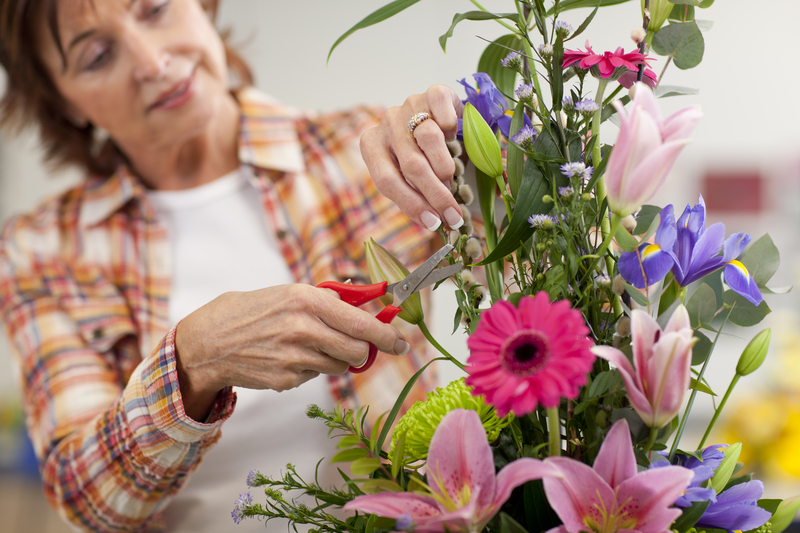Poinsettia Care Tips for Longevity
Posted on 19/08/2025
Poinsettia Care Tips for Longevity: The Ultimate Guide to Healthy, Vibrant Holiday Plants
The poinsettia (Euphorbia pulcherrima) stands as an iconic symbol of the holiday season, renowned for its brilliant red, pink, or cream-hued bracts. While these festive flowers are often associated with Christmas decor, their vibrant beauty can unfortunately be short-lived if not given the proper attention. By following expert poinsettia care tips for longevity, you can enjoy these dazzling plants well into the new year (and beyond). This comprehensive guide provides all the essential knowledge you need to ensure your poinsettias remain healthy, lush, and colorful for as long as possible.

Understanding the Poinsettia: Not Just a Holiday Ornament
Native to Mexico and Central America, poinsettias are perennials in their tropical home range, where they can grow as tall shrubs. In temperate climates, they're most often cultivated as decorative houseplants due to their sensitivity to cold. Despite the common misconception that the colored bracts are flowers, they're actually special leaves; the plant's true flowers are the tiny yellow buds clustered in the center of the bracts.
- Common Names: Poinsettia, Christmas Flower, Flor de Nochebuena
- Botanical Name: Euphorbia pulcherrima
- Native Habitat: Mexico, Central America
- Lifespan: Perennial in the right conditions, often cultivated as an annual
Why Caring for Poinsettias Matters
A well-cared-for poinsettia can last for months, rewarding you with continuous color long after the festivities have ended. With commitment and the correct steps, you may even coax your plant to rebloom for many holiday seasons to come. Proper poinsettia maintenance prevents leaf drop, fading colors, and premature plant death, ensuring your investment pays off in lasting beauty.
How to Choose a Healthy Poinsettia
Proper poinsettia plant care begins at the point of purchase. Selecting a robust specimen is crucial for long-term success. Look for these markers of a healthy plant:
- Bright, Undamaged Bracts: Choose plants with vibrant, unblemished bracts and avoid any with faded, spotted, or brown edges.
- Lush Green Foliage: The leaves should be plentiful and deep green, with no yellowing or drooping.
- Intact Flowers: Select a plant whose tiny yellow central flowers (cyathia) are closed; this means the plant is fresh and will last longer.
- Well-Potted and Stable: Ensure the root ball is not waterlogged and that the plant sits stably upright in its pot.
Tip: Avoid poinsettias left in drafty entryways or near store doors, as exposure to cold can shock the plant and reduce its longevity.
Optimal Light for Poinsettia Health
Light is one of the most critical elements in poinsettia care for longevity. Position your plant correctly for the best results:
- Bright, Indirect Light: Place your poinsettia near a sunny window where it receives ample filtered sunlight (ideally, six hours per day), avoiding direct midday rays that can scorch the bracts.
- Consistent Environment: Turn your plant frequently to maintain even growth and prevent it from leaning toward the light source.
- Low Light Warning: Insufficient lighting will lead to leaf drop and diminished plant vigor, shortening the display period.
Mastering Watering: Balancing Moisture for Poinsettias
Overwatering is the leading cause of premature poinsettia decline. To keep your plant thriving:
- Let the Soil Dry Slightly: Wait until the soil surface is dry to the touch before watering. Stick your finger about an inch deep--if it's dry, it's time to water.
- Thorough, Not Excessive: Water until liquid drains from the pot's bottom, but remove any standing water in the saucer to prevent root rot.
- Consistent Routine: Watering once every few days to a week is common, but always check the soil first. Overwatering can kill your plant faster than underwatering.
- Avoid Cold or Hot Water: Use lukewarm water to avoid shocking the roots.
Poinsettias are sensitive to both soggy and bone-dry conditions, so balancing moisture is key for long-lasting beauty.
Temperature and Humidity: Creating the Ideal Poinsettia Environment
Poinsettia plants enjoy warmth, but they don't tolerate extremes. Here's how to maintain the best climate for your festive flowers:
- Daytime Temperature: 60?F to 70?F (15? to 21?C) is optimal.
- Nighttime Temperature: Do not let it fall below 55?F (13?C).
- Protect from Drafts: Avoid windowsills with cold drafts, heaters, fireplaces, and doors where temperature shifts are common.
- Moderate Humidity: Too much dry air, often from central heating, can cause leaf edge browning. Use a pebble tray or small humidifier if your home is particularly arid.
Fun Fact: Poinsettias can drop bracts or leaves rapidly in response to cold stress. Keep them warm and cozy for the best results!
Fertilizing for Extended Poinsettia Life
Feeding poinsettias during their display period is usually unnecessary, as most holiday plants are pre-fertilized by growers. However, if you plan to keep your poinsettia through spring and summer, begin fertilizing as soon as new growth appears:
- Frequency: Apply a balanced, water-soluble houseplant fertilizer (such as 20-20-20) every three to four weeks during active growth (spring through fall).
- Skip While Blooming: Do not fertilize while the plant is in full color (December-February), as this can damage the bracts.
Pruning and Maintenance: Keeping Poinsettias Looking Their Best
Post-Holiday Pruning
- After Bract Fade: Once colored bracts begin to fade and fall, prune stems back to 4-6 inches above the soil, preserving 1-3 leaves per stem.
- Remove Dead Growth: Snip off any yellowed, wilted, or dead material to improve appearance and plant health.
Summer Maintenance
- Pinching: In late spring, pinch shoot tips to encourage branching and a bushier plant, resulting in fuller growth for next season's bloom.
Wear gloves when pruning--poinsettias oozes a white, milky sap that can irritate the skin and is mildly toxic if ingested.
Can You Keep a Poinsettia Year-Round?
Absolutely! With attentive poinsettia plant care, these beauties can be grown as attractive houseplants for years. After the holidays, treat your plant to a period of rest, then gradually move it outdoors (after frost) in a partly shaded locale for summer. Water and fertilize as you would a typical houseplant, then prepare it for rebloom in the fall.
How to Get a Poinsettia to Rebloom
One of the most rewarding challenges for poinsettia enthusiasts is to induce your plant to turn color again for next holiday season. The poinsettia reblooming process involves mimicking natural seasonal changes:
- Short Days, Long Nights: Beginning in late September or early October, expose the plant to complete darkness for 14-16 hours each night. Cover it with a box, or place it in a closet, from dusk until morning.
- Bright Daylight: Remove the cover each morning and return the plant to its sunny spot. This schedule must be maintained for at least eight weeks, until bracts start to show color change.
- Normal Care: Continue regular watering and temperature management during the day.
The reblooming process is delicate and requires discipline, but the reward--a burst of fresh, colorful bracts each December--is well worth the effort.
Poinsettia Toxicity and Pet Safety
A common holiday concern: Are poinsettias poisonous to pets? While these plants are often labeled as "toxic," their reputation is somewhat exaggerated:
- Mildly Toxic: Poinsettias contain a milky sap that can cause mild irritation if ingested by pets or humans. The symptoms are usually mild, including drooling, mild stomach upset, or skin irritation.
- Precautionary Steps: Keep out of reach of curious pets or small children, and wash hands after handling. Serious reactions are rare.
Common Poinsettia Care Issues and How to Solve Them
- Leaf Drop: Usually caused by sudden temperature swings, overwatering, or lack of light. Provide a stable environment and check your watering habits.
- Leaf Curling or Browning: Often a sign of dry air or inconsistent watering. Increase humidity and maintain regular watering.
- Wilting: Both overwatering and underwatering can cause wilting. Test the soil before watering.
- No Color Change: If reblooming attempts fail, insufficient darkness or interruption in the dark cycle is the probable reason.
Poinsettia Display and Decorating Tips for Longevity
For a genuinely spectacular display that lasts:
- Remove Decorative Foil: Many holiday poinsettias are sold wrapped in foil. Poke holes in or remove this wrapping for drainage to avoid waterlogged roots.
- Group with Other Plants: Cluster your poinsettias with ferns or peace lilies to boost humidity and create a stunning indoor arrangement.
- Avoid Fruit Bowls: Keep away from ripening fruits, which release ethylene gas that can age bracts and leaves faster.

Frequently Asked Questions About Poinsettia Plant Care
- How long do indoor poinsettias last?
With ideal care, poinsettias can remain attractive for two to three months, sometimes even longer. - Can I plant my poinsettia outside?
In USDA zones 9-11, you can transplant it outdoors in spring. In colder climates, treat as a houseplant. - How often should I water my poinsettia?
Water only when the top inch of soil is dry--typically every few days to a week, depending on the environment. - Why are my poinsettia leaves turning yellow?
This usually indicates overwatering, underwatering, or stress from drafts or temperature fluctuations.
Conclusion: The Joy of Healthy Poinsettias All Year Long
By applying these poinsettia care tips for longevity and addressing your plant's unique needs, you can transform your festive purchase into a lush, thriving showpiece that endures well beyond the winter holidays. Enjoy the enduring color, bring cheer to your home, and embark on the rewarding journey of year-round poinsettia care. With just a little knowledge and effort, your poinsettia can become a living tradition for years to come!
Related keywords: how to care for poinsettias, holiday plant care, keeping poinsettias healthy, long lasting poinsettia care, best light for poinsettias, watering tips for poinsettias, diseases of poinsettias, pet-safe holiday plants







